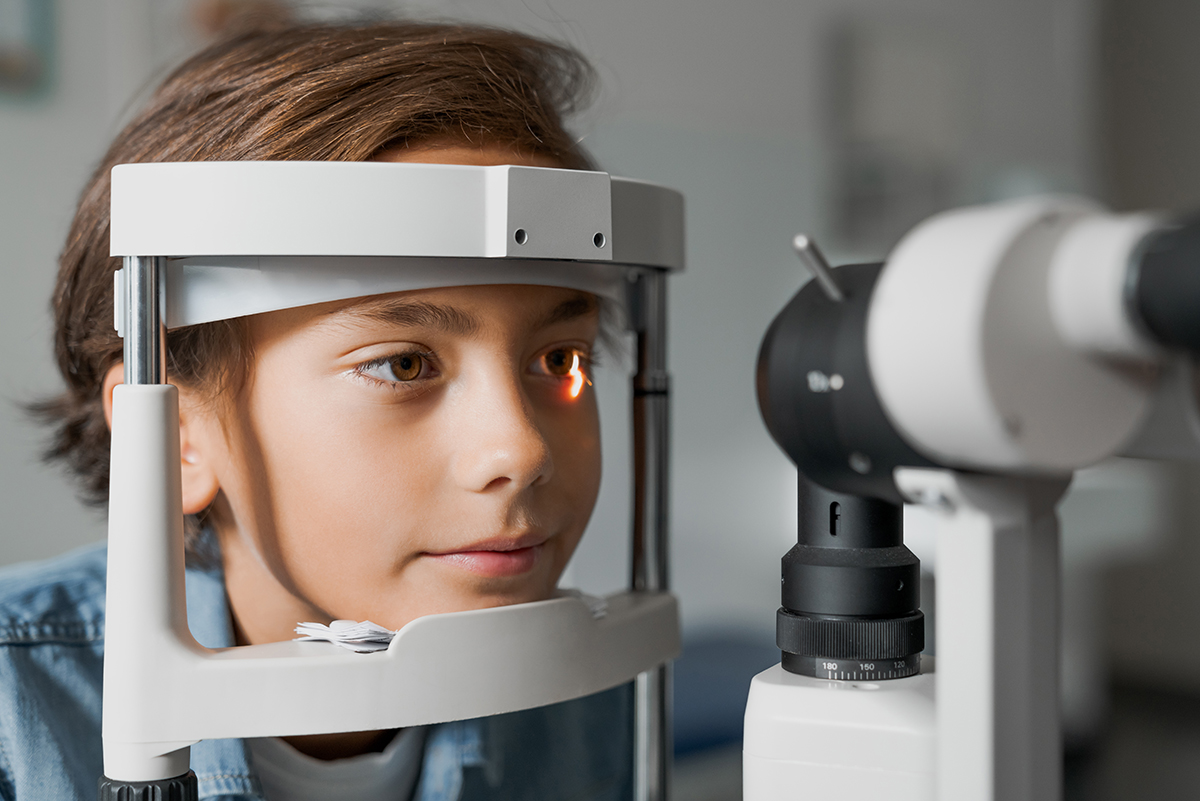
August is Children’s Eye Health and Safety Month, and our eye doctors at Wiles Eye Center want parents to understand the warning signs of eye problems and when to bring their kids in for an eye exam.
Why Children Need Eye Exams
August is typically the month when kids are funneling back into the classroom or preparing to return to school. Eye exams are a critical part of this time of year as vision problems can affect your child’s learning and development. Children constantly learn with their eyes, and the first years in school are spent learning to read — a wholly visual task. Regular eye exams can ensure good vision and eye health and avoid learning disabilities. Some parents are surprised to learn that their kid doesn’t have a learning issue but rather a vision issue. Annual eye exams with one of our Kansas City or St. Joseph eye doctors are the best way to help children stay on track and view the world in sharp clarity.
Warning Signs of Eye Problems in Children
Sometimes, blurry vision and other eye concerns are easy to spot in kids, but some warning signs may not be so obvious. If your child shows these symptoms, consider an eye exam:
- Misaligned eyes
- Red or watery eyes
- Red, swollen or crusted eyelids
- Rubbing the eyes constantly
- Covering or closing one eye to see
- Tilting the head to watch TV
- Holding a book far away from or close to the face
- Excessive blinking
- Squinting or frowning to see
- Behavioral changes after close-up tasks or reading
- A disinterest or loss of interest in reading or viewing items at a distance
Older children may complain of burning or itching eyes and say that something is scratching their eyes. Head pain, dizziness, nausea and stomach pain may happen after extended time doing close-up work. Our eye doctors can diagnose eye problems and refractive errors, such as nearsightedness or farsightedness, during an eye exam.
Children’s Eye Health and Screens
School work often requires hours in front of a screen, especially during remote classes. Many children experience eye strain after extended screen use, but there are ways to decrease that discomfort. Encourage your children and the rest of the family to give their eyes a break every 20 minutes by looking 20 feet away for 20 seconds (called the 20/20/20 rule). Reducing glare from screens and adjusting the contrast and brightness controls can minimize eye strain.
These extended hours on the screen and late nights studying can affect teenagers who wear contact lenses. Wearing prescription eyeglasses instead can give the cornea a break and prevent kids from falling asleep wearing contact lenses. Poor contact lens care can cause corneal ulcers, blurry vision and eye infections.
Schedule an eye exam for your child at Wiles Eye Center today. Contact our St. Joseph, Missouri office at (816) 279-7015 or our Kansas City, Missouri office at (816) 455-2020.

Comments are closed here.